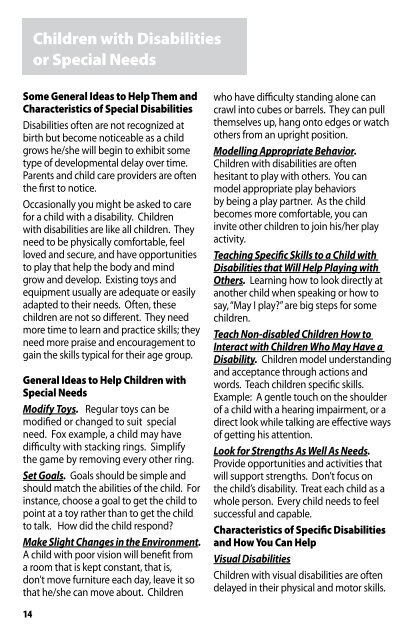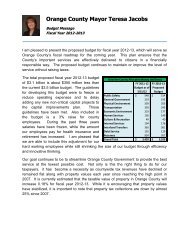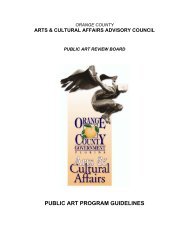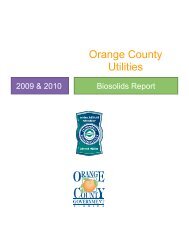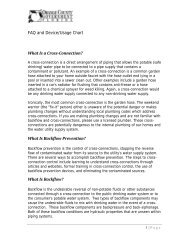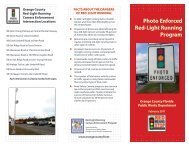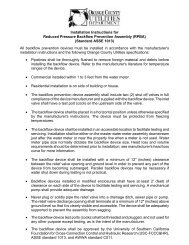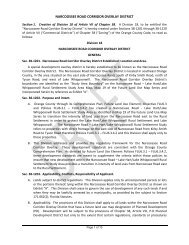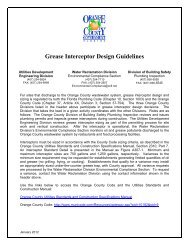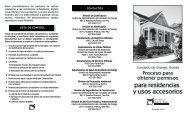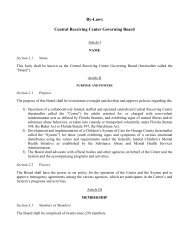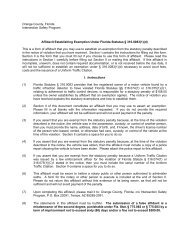Disability Resource Directory - Orange County
Disability Resource Directory - Orange County
Disability Resource Directory - Orange County
You also want an ePaper? Increase the reach of your titles
YUMPU automatically turns print PDFs into web optimized ePapers that Google loves.
Children with Disabilities<br />
or Special Needs<br />
Some General Ideas to Help Them and<br />
Characteristics of Special Disabilities<br />
Disabilities often are not recognized at<br />
birth but become noticeable as a child<br />
grows he/she will begin to exhibit some<br />
type of developmental delay over time.<br />
Parents and child care providers are often<br />
the first to notice.<br />
Occasionally you might be asked to care<br />
for a child with a disability. Children<br />
with disabilities are like all children. They<br />
need to be physically comfortable, feel<br />
loved and secure, and have opportunities<br />
to play that help the body and mind<br />
grow and develop. Existing toys and<br />
equipment usually are adequate or easily<br />
adapted to their needs. Often, these<br />
children are not so different. They need<br />
more time to learn and practice skills; they<br />
need more praise and encouragement to<br />
gain the skills typical for their age group.<br />
General Ideas to Help Children with<br />
Special Needs<br />
Modify Toys. Regular toys can be<br />
modified or changed to suit special<br />
need. Fox example, a child may have<br />
difficulty with stacking rings. Simplify<br />
the game by removing every other ring.<br />
Set Goals. Goals should be simple and<br />
should match the abilities of the child. For<br />
instance, choose a goal to get the child to<br />
point at a toy rather than to get the child<br />
to talk. How did the child respond?<br />
Make Slight Changes in the Environment.<br />
A child with poor vision will benefit from<br />
a room that is kept constant, that is,<br />
don’t move furniture each day, leave it so<br />
that he/she can move about. Children<br />
who have difficulty standing alone can<br />
crawl into cubes or barrels. They can pull<br />
themselves up, hang onto edges or watch<br />
others from an upright position.<br />
Modelling Appropriate Behavior.<br />
Children with disabilities are often<br />
hesitant to play with others. You can<br />
model appropriate play behaviors<br />
by being a play partner. As the child<br />
becomes more comfortable, you can<br />
invite other children to join his/her play<br />
activity.<br />
Teaching Specific Skills to a Child with<br />
Disabilities that Will Help Playing with<br />
Others. Learning how to look directly at<br />
another child when speaking or how to<br />
say, “May I play?” are big steps for some<br />
children.<br />
Teach Non-disabled Children How to<br />
Interact with Children Who May Have a<br />
<strong>Disability</strong>. Children model understanding<br />
and acceptance through actions and<br />
words. Teach children specific skills.<br />
Example: A gentle touch on the shoulder<br />
of a child with a hearing impairment, or a<br />
direct look while talking are effective ways<br />
of getting his attention.<br />
Look for Strengths As Well As Needs.<br />
Provide opportunities and activities that<br />
will support strengths. Don’t focus on<br />
the child’s disability. Treat each child as a<br />
whole person. Every child needs to feel<br />
successful and capable.<br />
Characteristics of Specific Disabilities<br />
and How You Can Help<br />
Visual Disabilities<br />
Children with visual disabilities are often<br />
delayed in their physical and motor skills.<br />
14


